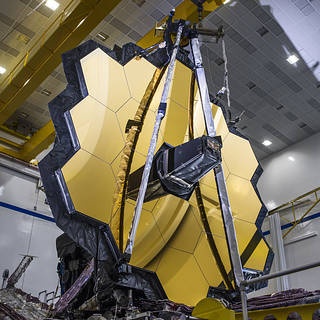@article{Yu_2024,
title={A possible misaligned orbit for the young planet AU Mic c},
volume={536},
ISSN={1365-2966},
url={http://dx.doi.org/10.1093/mnras/stae2655},
DOI={10.1093/mnras/stae2655},
number={3},
journal={Monthly Notices of the Royal Astronomical Society},
publisher={Oxford University Press (OUP)},
author={Yu, H and Garai, Z and Cretignier, M and Szabó, Gy M and Aigrain, S and Gandolfi, D and Bryant, E M and Correia, A C M and Klein, B and Brandeker, A and Owen, J E and Günther, M N and Winn, J N and Heitzmann, A and Cegla, H M and Wilson, T G and Gill, S and Kriskovics, L and Barragán, O and Boldog, A and Nielsen, L D and Billot, N and Lafarga, M and Meech, A and Alibert, Y and Alonso, R and Bárczy, T and Barrado, D and Barros, S C C and Baumjohann, W and Bayliss, D and Benz, W and Bergomi, M and Borsato, L and Broeg, C and Cameron, A Collier and Csizmadia, Sz and Cubillos, P E and Davies, M B and Deleuil, M and Deline, A and Demangeon, O D S and Demory, B -O and Derekas, A and Doyle, L and Edwards, B and Egger, J A and Ehrenreich, D and Erikson, A and Fortier, A and Fossati, L and Fridlund, M and Gazeas, K and Gillon, M and Güdel, M and Helling, Ch and Isaak, K G and Kiss, L L and Korth, J and Lam, K W F and Laskar, J and Lecavelier des Etangs, A and Lendl, M and Magrin, D and Maxted, P F L and McCormac, J and Merín, B and Mordasini, C and Nascimbeni, V and O’Brien, S M and Olofsson, G and Ottensamer, R and Pagano, I and Pallé, E and Peter, G and Piazza, D and Piotto, G and Pollacco, D and Queloz, D and Ragazzoni, R and Rando, N and Rauer, H and Ribas, I and Santos, N C and Scandariato, G and Ségransan, D and Simon, A E and Smith, A M S and Sousa, S G and Southworth, R and Stalport, M and Steinberger, M and Sulis, S and Udry, S and Ulmer, B and Ulmer-Moll, S and Van Grootel, V and Venturini, J and Villaver, E and Walton, N A and Wheatley, P J},
year={2024},
month=nov, pages={2046–2063} }

